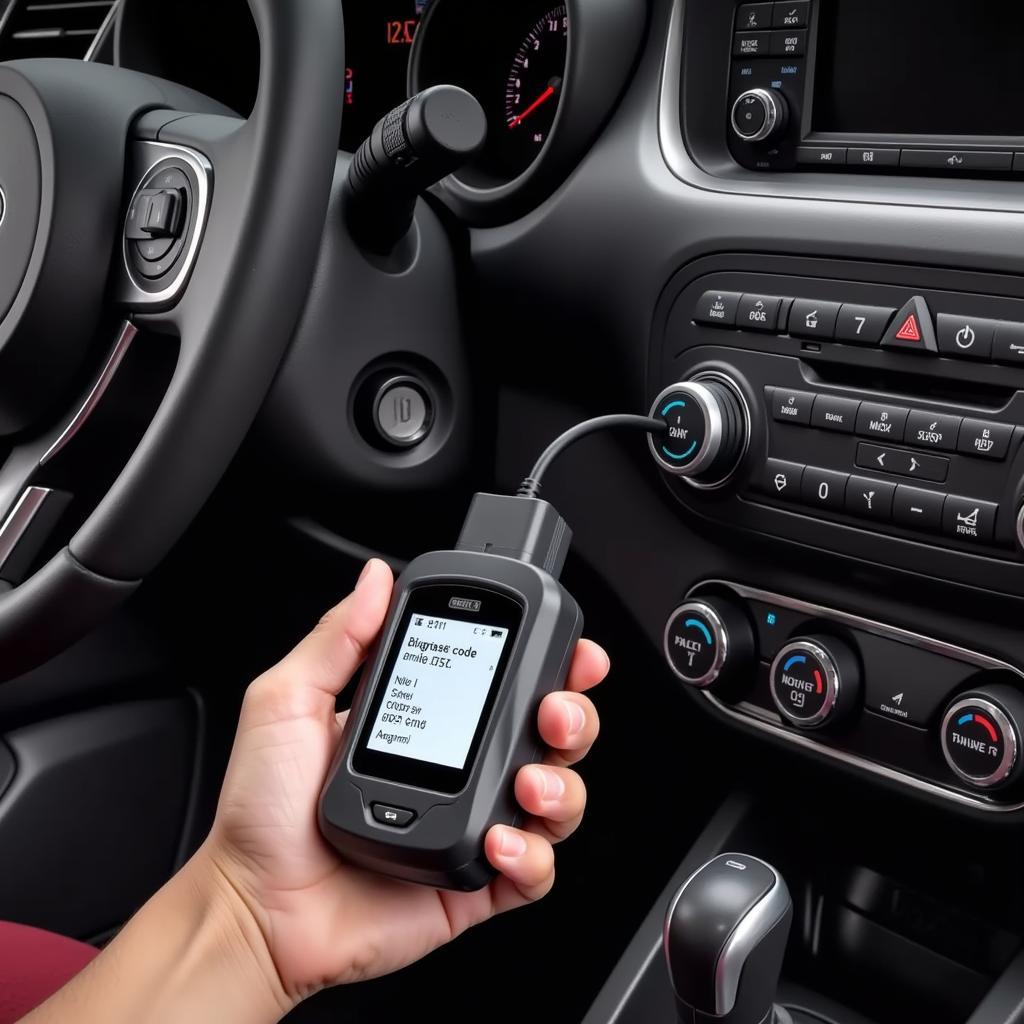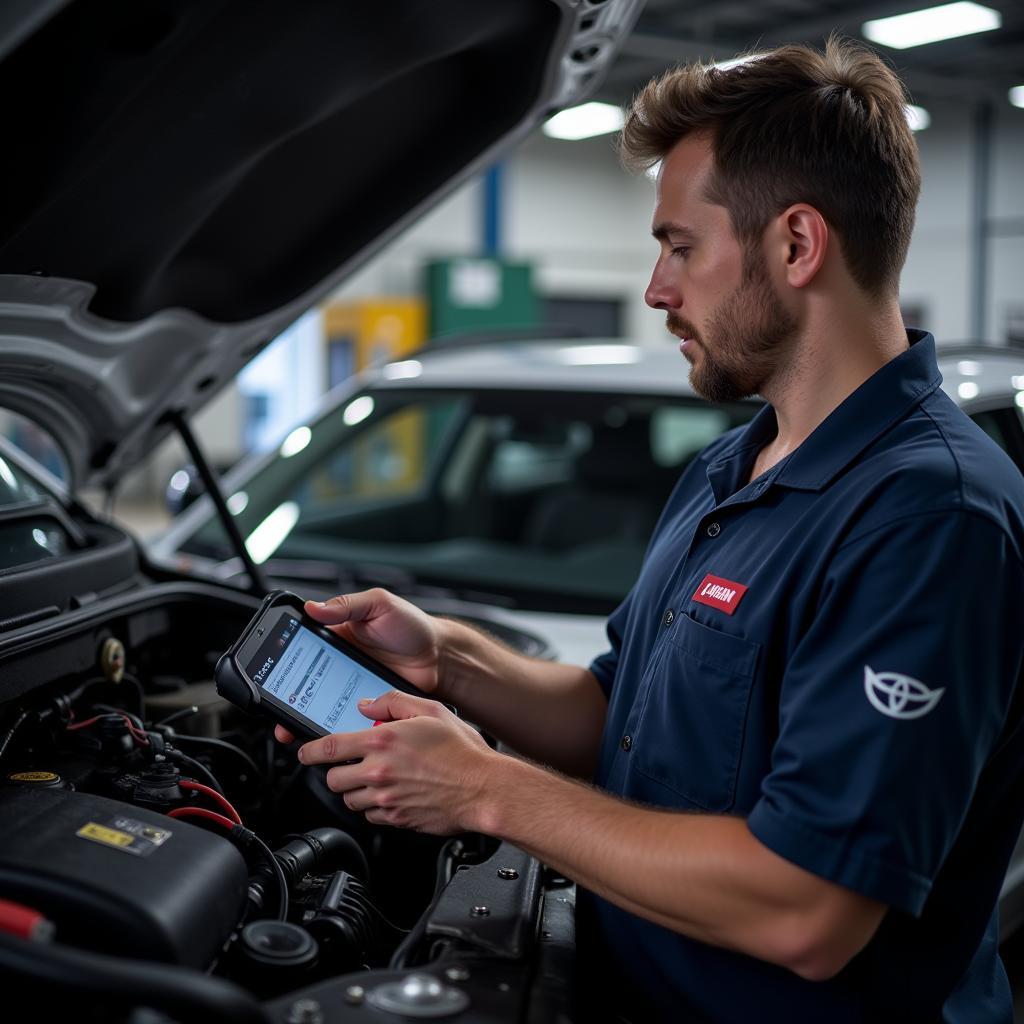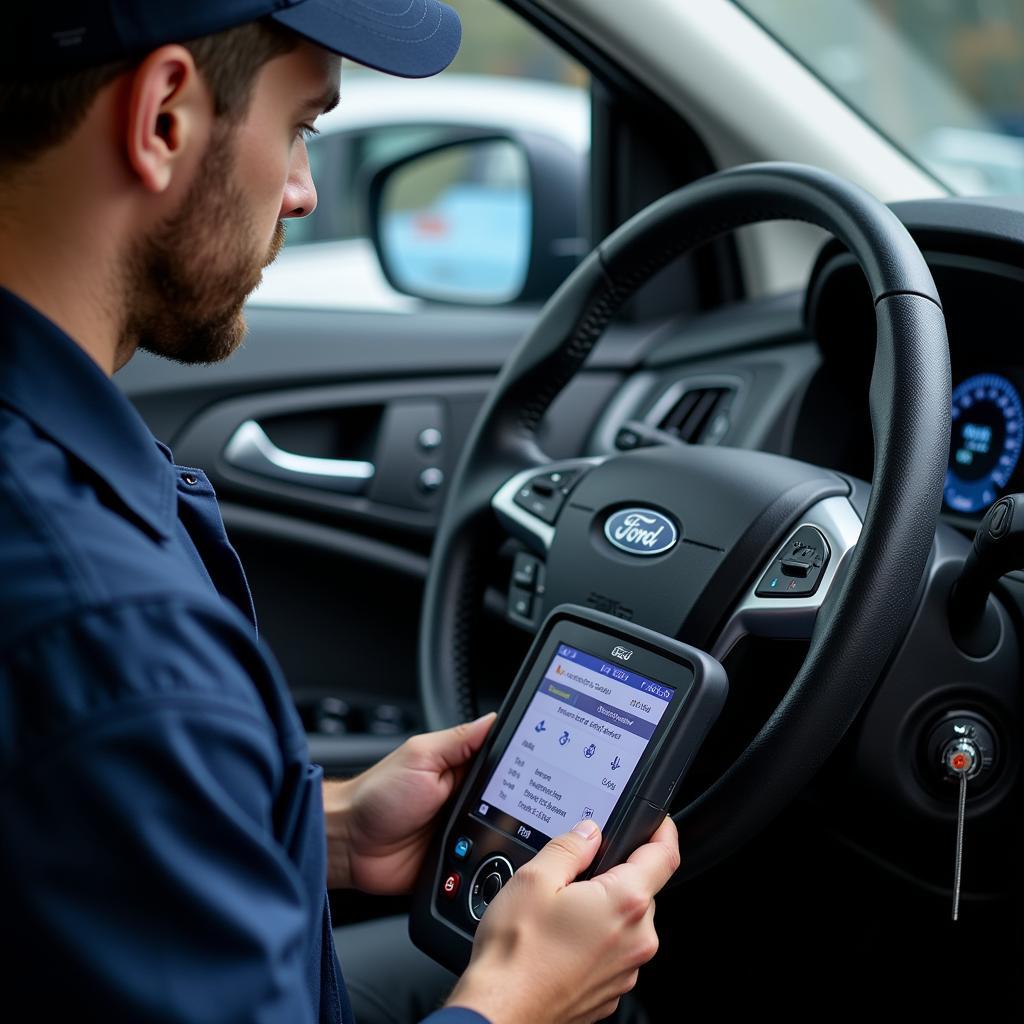A 7.3 Powerstroke engine that won’t crank and shows no RPM on your scan tool can be a frustrating issue. It typically indicates a problem with the engine’s control system, preventing it from receiving the signals needed to start. This comprehensive guide will delve into the common causes of this problem and provide a step-by-step approach to diagnosing and resolving it.
Understanding the Basics: Cranking, RPM, and Your Scan Tool
Before diving into the troubleshooting process, it’s essential to understand the core components involved:
- Cranking: This refers to the engine being rotated by the starter motor, a crucial step before it can fire up.
- RPM (Revolutions Per Minute): This measures how fast the engine’s crankshaft is spinning. During cranking, you should see a specific RPM range on your scan tool, typically between 100-200 RPM.
- Scan Tool: This diagnostic tool acts as your window into the 7.3 Powerstroke’s computer, the PCM (Powertrain Control Module). It allows you to read vital information, including RPM, sensor data, and error codes.
When you see “no cranking RPM” on your scan tool while trying to start your 7.3 Powerstroke, it means the PCM isn’t detecting the engine rotating. This lack of signal prevents the engine from receiving the fuel and spark necessary for ignition.
Common Causes of No Cranking RPM on a 7.3 Powerstroke
Several culprits can lead to this issue. Here are the most common ones:
- Faulty Crank Position Sensor (CPS): The CPS is critical in determining the engine’s position and speed. A malfunctioning CPS won’t send the correct signals to the PCM, leading to no RPM reading and a no-start condition.
- Wiring Issues: Damaged, corroded, or loose wiring connected to the CPS, PCM, or related components can disrupt communication within the system, again leading to a lack of RPM signal.
- Defective PCM: While less common, a faulty PCM can cause a myriad of issues, including a no-cranking RPM situation.
- Low Batteries or a Bad Starter: While these issues might seem unrelated to the PCM and RPM readings, they can indirectly cause the same symptoms. A weak battery or failing starter might not crank the engine fast enough for the CPS to generate a signal, leading to a no-RPM scenario.
Troubleshooting Steps for No Cranking RPM
Follow these steps to pinpoint the root cause of the issue:
- Check Battery and Starter: Begin with the basics. Ensure your batteries are fully charged and the starter is functioning correctly.
- Inspect the Crank Position Sensor: Locate the CPS on the engine block (consult your owner’s manual for the exact location). Inspect it for any visible damage, debris, or corrosion.
- Test the CPS: Use a multimeter to test the CPS for continuity and resistance. Compare your readings with the manufacturer’s specifications. A faulty CPS will likely show incorrect values.
- Examine Wiring and Connections: Carefully inspect all wiring harnesses and connectors associated with the CPS, PCM, and related components. Look for any signs of damage, loose connections, or corrosion. Repair or replace as needed.
- Scan for Diagnostic Trouble Codes (DTCs): Connect your scan tool and check for any stored DTCs. Pay close attention to codes related to the CPS, PCM, or communication errors.
- Consider PCM Issues: If other components check out and the issue persists, the PCM might be faulty. However, diagnosing and repairing a PCM requires specialized knowledge and equipment. It’s recommended to consult with a qualified diesel mechanic or an authorized Ford service center in such cases.
Expert Insights
“When a 7.3 Powerstroke shows no cranking RPM, the CPS is often the prime suspect,” says John Miller, a seasoned diesel mechanic with over 20 years of experience. “However, don’t overlook the basics – always rule out battery and starter issues first. And if the problem runs deeper, a thorough diagnostic scan is crucial.”
Conclusion
Addressing a no-cranking RPM issue on your 7.3 Powerstroke requires a systematic approach. By understanding the basics, identifying potential culprits, and following the troubleshooting steps outlined above, you can effectively diagnose and resolve the problem. Remember, using a high-quality scan tool designed for diesel engines is crucial for accurate readings and diagnosis.
If you’re uncomfortable working on your vehicle or the issue persists, don’t hesitate to seek help from a trusted mechanic specializing in 7.3 Powerstroke engines.
FAQs
Q: Can a bad camshaft position sensor cause no cranking RPM?
A: While the camshaft position sensor plays a role in engine timing, it typically doesn’t directly affect cranking RPM readings. The crankshaft position sensor is the primary sensor for this function.
Q: Can I drive my truck with a faulty CPS?
A: It’s not recommended to drive with a suspected faulty CPS. A malfunctioning sensor can lead to performance issues, misfires, and even engine damage.
Q: What should I do if I’ve replaced the CPS and the problem persists?
A: If replacing the CPS doesn’t resolve the issue, the problem likely lies elsewhere in the starting or engine management system. It’s best to consult with a qualified mechanic for further diagnosis.
Q: How often should I replace my CPS as preventive maintenance?
A: While there’s no set replacement interval for the CPS, it’s generally a good idea to consider replacing it if you’re experiencing intermittent starting issues or have high mileage on your 7.3 Powerstroke.
Need Further Assistance?
Facing persistent 7.3 Powerstroke troubles? Contact us via WhatsApp: +1(641)206-8880, Email: [email protected] Or visit us at 276 Reock St, City of Orange, NJ 07050, United States. Our 24/7 customer support team is always ready to help.


